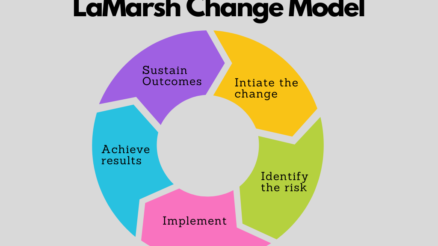It is important for organizations to undergo change and development in order to stay competitive in the current business environment. There are many factors that contribute to organizational success, and it is essential for companies to be able to adapt in order to thrive.
In this blog post, we will discuss the importance of organizational change and development, as well as how you can make changes within your organization.
We will also explore the benefits of making these changes, and offer advice on how you can ensure successful implementation.
Finally, we will discuss some of the challenges you may face during this process, and provide resources that can help.
What is organizational change and development?
Organizational change and development is the process by which an organizational structure modifies and adapts to changing variables, be it economic, accounting or technological. Organizations must be agile in order to remain competitive in today’s intensely fast-paced business environment; organizational change and development allows for a structured approach to handle such transformations.
Implementing organizational changes requires strategic planning, well-developed organizational goals, sound technological implementation systems and rigorous effort from all employees involved. Employers that invest in organizational change and development can yield higher employ satisfaction levels, greater productivity of staff and the ability to distinguish themselves amongst competitors.
Why is it important?
Organizational change and development is vitally important in today’s ever-changing working environment. Companies that take a proactive approach to embracing change and fostering development remain ahead of competitors. Change allows organizations to move from where they are currently situated and work towards a desirable future state based on strategic initiatives, organizational systems, processes and practices.
Development across people, organizational design and culture enables companies to advance with the latest trends, technologies and insights while focusing on organizational growth. Taking advantage of organizational change and development offers a powerful way for businesses to gain competitive advantage and ensure long-term success in their chosen markets.
Difference between organizational change and development
Many a times people use these both terms interchangeably as the difference is so blur. But technically there is a difference between organizational change and organizational development. It is a difference of degree as organizational development refers to long term evolutionary changes whereas organizational change is about revolutionary changes in relatively short period of time.
Organizational change happens in weeks, months or years and it may be a complete transformation whereas organizational development is a gradual process and it takes long time.
Examples of organizational development
Following are key examples of organizational development:
- Process Interventions: When organizations initiate interventions in process to perform and function in a better way. For this to happen, human resource is trained and mentored to adopt new skills and knowledge in order to improve its process.
- Structural and Design Change: It is about making structural changes or improvement in design of organization to improve operations and overall functioning of organisation.
- Human Resource Interventions: It is about improving employees engagement, performance management, motivation etc. This is done by creating employees wellness program, work-life balance, introducing employees diversity program etc.
Examples of organizational change
Here are some examples of organizational change:
- Mergers and acquisitions: It happens when two or more than two business entities join each other. It happens drastically and rapidly.
- Rebranding: Many organisations opt for rebranding. It includes changes in logos, branding assists, brand images or brand ambassador
- Digital adoption: Its more common nowadays because many organization are adopting new digital technology.
Benefits of organizational change and development
Organizational change and development can be instrumental in driving organisational success. It helps improve organisational climates, create a strong team dynamic, and boost employee morale.
With organizational change, companies can more easily adjust to a changing external environment, allowing for better strategic planning and execution.
Additionally, organizational development is beneficial for the individual employee as it provides opportunities for building useful skills that are relevant in their current and future roles.
Furthermore, organizational change and development facilitates creative problem solving by increasing collaboration amongst all stakeholders involved. All of these benefits can significantly contribute to organisational growth and performance.
How can you make organizational change and development?
Organisational change and development can be achieved by ensuring that every team member is included in the decision-making process and given an opportunity to be heard.
It is important to understand what motivates employees, listen to their feedback, and encourage open dialogue so that all ideas are considered when making organizational changes.
Additionally, aligning organisational values with day-to-day operations can help create a unified organisational culture that will drive productivity and innovation in the long run.
Finally, ensure that organizational goals are clear for each team member so that everyone can contribute towards the same objective. By following these steps you can make organisational change and development possible.
How can you ensure that changes are implemented successfully?
Successful organisational change and development requires a cohesive and strategic approach that considers all stakeholders’ needs. A positive organisational culture and supportive organisational structure are essential, along with clear and effective communication on expectations around the change.
Effective leadership should guide the change, while leaders must also be open to feedback from employees and take into account their unique perspectives.
Including individuals impacted by the changes in the planning process will assist in creating an environment where people feel engaged and empowered to contribute to successful implementation of the proposed changes.
Additionally, a performance review system can ensure that progress is monitored throughout the implementation period. All these elements have a role to play in ensuring that changes are implemented successfully.
Challenges of organizational change and development
As organizational change and development are processes that are essential to any organisation’s growth and sustainability, they often come with challenges.
One of these challenges is the process of communicating and introducing organisational changes to members of staff. Developing effective communication plans is important to ensure employees are fully aware of organisational changes, new initiatives and goals. Leaders should also focus on gathering individual feedback from employees in order to identify potential issues or areas for improvement before finalising organisational changes.
People always resist change because they are anxious about the future. Its job of change leaders to address people fears and concerns about change. Not understanding reasons of resistance to change is one of the biggest mistake on the part of organisational leaders.
Additionally, when implementing organisational change, ensuring the necessary resources (time, money, skills etc) are available for successful completion is essential for organisational development.
Lastly, during the process of organisational change and development it is key for leadership teams to build trust amongst their team members in order for progress to be made without missed deadlines or restrictions on decision-making.
Final Words
Organizational change and development is an important process that can bring many benefits to organizations. When successfully implemented, organizational change can improve efficiency, communication, and employee morale. With careful planning and execution, organizational change and development can be a positive force for any organization.



